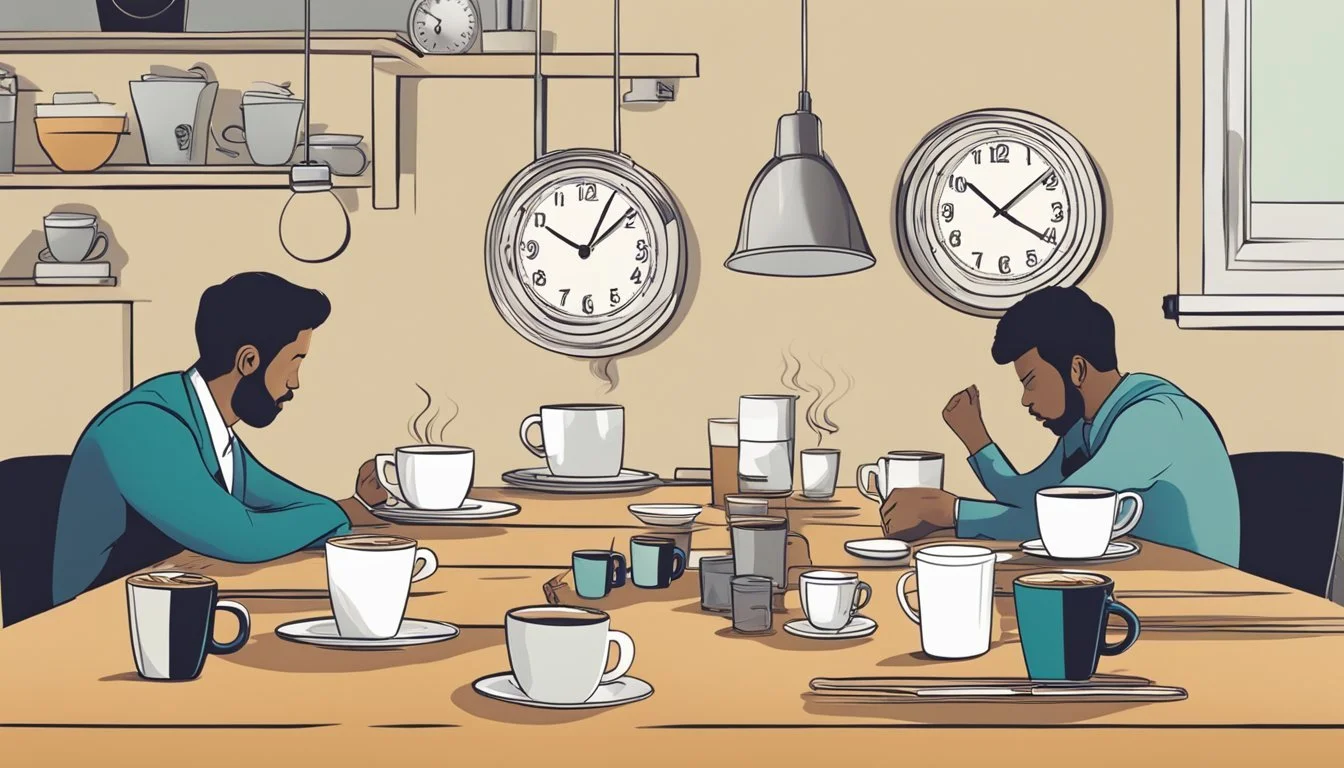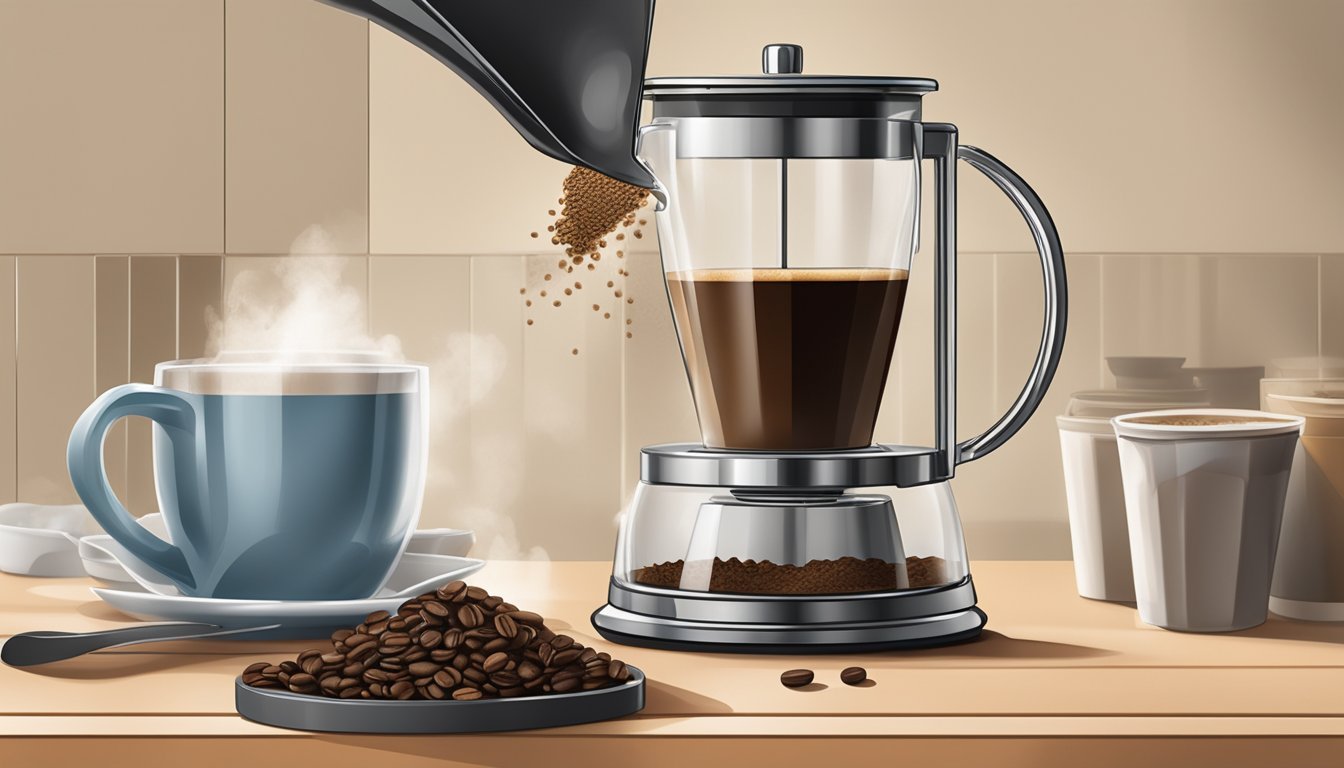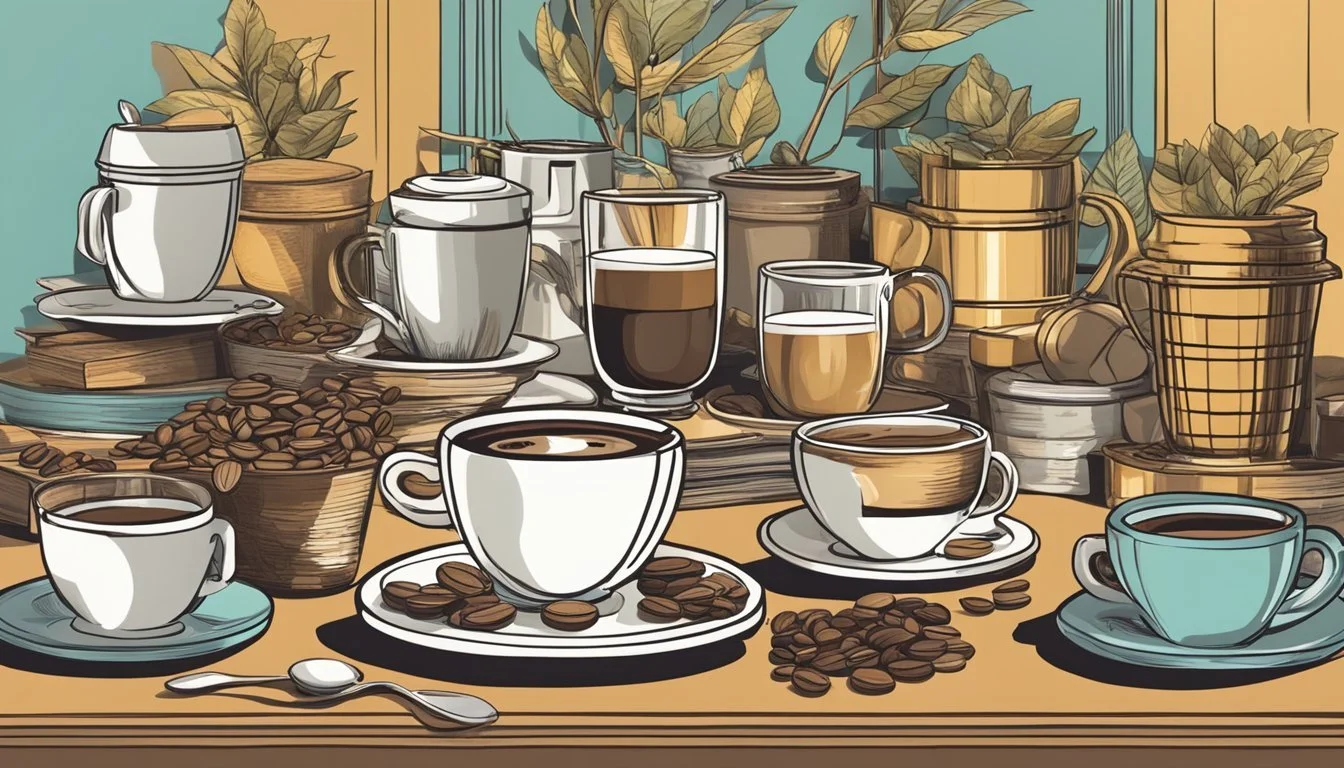How Many Cups of Eight O'Clock Coffee Per Day Exceed Healthy Limits?
When considering the daily consumption limits for Eight O'Clock Coffee, one important factor is the caffeine content. An 8-ounce serving of Eight O'Clock Coffee's original blend contains approximately 105 mg of caffeine. Health guidelines suggest that up to 400 mg of caffeine per day is generally regarded as safe for most adults. This translates to about four standard 8-ounce cups of brewed coffee from brands like Eight O'Clock.
However, individual tolerance to caffeine can vary widely, and some may experience adverse effects at lower doses. Factors such as body weight, age, medication, health conditions, and sensitivity to caffeine should be taken into account. Drinking six or more cups of coffee could significantly increase heart disease risk, suggesting that moderating coffee intake is prudent, even with a brand like Eight O'Clock Coffee that has a moderate amount of caffeine per serving.
The key to enjoying Eight O'Clock Coffee, or any coffee, is balancing the pleasure of the beverage with an awareness of one's response to caffeine. It's essential to listen to one's body and adjust consumption accordingly to maintain overall health and well-being.
Understanding Coffee
In the realm of coffee, caffeine content and bean type are seminal to its potency and taste. Let's navigate through the core elements of coffee and its various attributes.
The Role of Caffeine
Caffeine, a central nervous system stimulant, is the driving force behind coffee's energy-boosting properties. An average 8-ounce cup of Eight O'Clock Coffee contains about 112 mg of caffeine, while its decaf counterpart offers a coffee experience with minimal caffeine content. Adults can consume up to 400 mg of caffeine per day safely, making about 3-4 cups of Eight O'Clock Coffee a moderate daily intake.
Different Types of Coffee Beans
Coffee beans come primarily in four varieties: Arabica, Robusta, Liberica, and Excelsa. Arabica beans are prized for their smooth flavor and are used in blends like Eight O'Clock's Original and Bokar Blend Coffees. They are often considered higher quality and have a less bitter taste compared to Robusta beans which contain more caffeine.
Popular Coffee Brands and Blends
Numerous coffee brands offer a wide array of blends. Eight O'Clock Coffee is a revered brand known for its 100% Arabica coffee beans. Other notable names include Death Wish Coffee, known for its high caffeine content derived from a blend of Arabica and Robusta. Brands vary widely in flavor, from the smooth taste of Eight O'Clock to the intense, bold taste of Death Wish Coffee.
Brewing Methods Variations
Coffee brewing techniques significantly influence the flavor and caffeine levels in a cup of coffee. Drip coffee, French press, espresso, and cold brew are popular methods. For instance, a shot of espresso might have about 63 mg of caffeine, whereas French press coffee offers a richer taste with more caffeine extracted during its longer brewing process. K-Cups and ground coffee options cater to convenience but can vary in strength and taste depending on the coffee used.
Health and Consumption
Consuming Eight O'Clock coffee in moderation is key to maximizing its benefits while minimizing potential health risks. The caffeine content and individual tolerance levels dictate how much coffee is too much.
Recommended Intake of Caffeine
The FDA recommends that healthy adults limit their caffeine intake to no more than 400 mg per day, the equivalent of roughly three to four 8-ounce cups of Eight O'Clock coffee, which contains about 105 mg of caffeine per serving. Exceeding this amount could lead to symptoms of caffeine overdose such as insomnia, anxiety, and irritability.
Effects of Caffeine on Health
Caffeine affects individuals differently. While it can improve cognitive function and augment the beneficial effects of antioxidants found in coffee, too much caffeine may increase blood pressure and pose risks. Regular overconsumption can harm overall health, leading to caffeine overdose symptoms and potentially exacerbating conditions like diabetes.
Considerations for Specific Groups
Pregnant Women: Should limit caffeine to less than 200 mg per day as it can affect the fetus and has been associated with birth weight reductions.
Teens: Are advised to be cautious, as their bodies may be more sensitive to caffeine's effects.
Individuals with Anxiety Disorders: Excessive caffeine can aggravate anxiety and other mental health issues.
It is important to consider the type of coffee beans used, as different beans have varying levels of caffeine. The 100% Arabica beans used in Eight O' Clock coffee tend to have a slightly lower caffeine content compared to Robusta beans. Always tailor coffee consumption to personal health profiles and tolerance levels.
Preparing Eight O'Clock Coffee
When making Eight O'Clock Coffee, understanding the proper coffee to water ratio and brewing techniques is crucial for achieving the best cup of coffee. The selection of the coffee, the measurement of grounds, and the nuances of flavor enhancement are key elements to consider.
Selection and Measurement
When selecting Eight O'Clock Coffee, one must choose between ground or whole bean versions of blends like the Original, French Roast, or flavors such as Vanilla or Hazelnut. Measurement is the next vital step; use 1-2 rounded tablespoons of ground coffee per six ounces of water for a balanced strength. For brewing 8 cups of coffee, one would need approximately 1 1/3 cups of coffee grounds. Confirming the grind size is essential too; medium grind works best for drip coffee makers, whereas a finer grind is suitable for espresso makers.
Optimal Brewing Techniques
The brewing method contributes significantly to the quality of home-brewed coffee. For the Eight O'Clock Coffee, a water temperature just below boiling, between 195°F to 205°F, is optimal as it extracts the flavors efficiently without imparting excessive acidity or bitterness. Drip coffee makers, French presses, and espresso machines are some of the recommended methods. It's important to follow the brewer's instructions closely to avoid over-extraction that can lead to a strong, bitter cup, or under-extraction that may result in a weak coffee with a lack of complex finish.
Flavor Enhancement Tips
Even the perfect cup of coffee can be tailored to personal tastes with additional flavor enhancements. While Eight O'Clock Coffee is smooth and full-bodied, adding ingredients like milk or sugar can balance any acidity and add sweetness. Choose sugar carefully to avoid a sugar crash. For maintaining the inherent flavors, store coffee in a cool, dry place away from light and ensure it’s sealed properly. Darker roasts tend to have a stronger taste, while lighter roasts offer a mild experience. Consider using filtered water for a more consistent taste, avoiding the chlorine and minerals that can affect the taste of your brew.
Safely Enjoying Coffee
When enjoying Eight O'Clock coffee or any other brand, it's essential to monitor consumption and understand how it affects one's body. Moderation is key to avoiding potential side effects and maintaining a healthy lifestyle.
Identifying Signs of Excessive Consumption
Excessive consumption of caffeinated beverages such as Eight O'Clock coffee can lead to noticeable side effects. These may include but are not limited to sleep disturbances, heightened anxiety, tremors, and an accelerated heart rate. Individuals should be vigilant for signs of overconsumption, as reactions may vary based on tolerance and sensitivity levels.
Restlessness and difficulty winding down could interfere with a sleep schedule.
Gastrointestinal issues can emerge, potentially disrupting daily activities.
Headaches or dizziness may develop as a consequence of too much caffeine.
Balancing Coffee Intake with Other Beverages
To mitigate the risks connected with high caffeine intake, one can balance Eight O'Clock coffee consumption with decaffeinated beverages or other non-caffeinated drinks. The recommended limit is up to 400 milligrams of caffeine daily, equating to about four 8-ounce cups of coffee.
Decaf varieties provide the taste of coffee without significantly impacting caffeine intake.
Beverages like water or fruit infusions help maintain hydration and reduce total caffeine consumption.
For caffeine sources other than coffee, such as cola or coke, be mindful that a 12-ounce can often contains 30 to 40 milligrams of caffeine.
Coffee Culture and Trends
In recent years, the coffee industry has seen a notable pivot towards specialty brews and ethical sourcing, impacting how coffee lovers consume their daily cup.
Emerging Coffee Trends
Pour-over Coffee: Among coffee enthusiasts, pour-over brewing has gained prominence for its ability to bring out subtle flavor notes, particularly using high-quality Arabica coffee beans. Brands like Tata Global Beverages and Eight O'Clock Coffee are adjusting their offerings to cater to this trend, recognizing the demand for artisanal coffee experiences.
High-Caffeine Blends: Companies such as Death Wish Coffee and Devil Mountain Coffee have introduced blends with significantly higher caffeine content, capitalizing on consumers seeking a more potent kick from their coffee. For example, Death Wish claims to be the world's strongest coffee, offering a stark contrast to traditional blends like Folgers Coffee or their Bokar Blend.
The Social Aspect of Coffee Drinking
Coffee Shops as Social Hubs: Coffee drinking often serves a social purpose. For instance, Starbucks has established itself as a "third place" between home and work where people can relax, meet, or work. The ambiance and community aspect are as crucial as the coffee itself.
Cultural Impact of Brands: On the cultural front, brands like Café Bustelo have played a significant role in coffee drinking habits, particularly within Hispanic communities, by tailoring their message and flavor profiles to resonate with these consumers' cultural preferences.
As these trends illustrate, coffee culture is as much about the coffee consumed as it is about the context in which it is enjoyed, reflecting an interplay between individual tastes and communal experiences.






